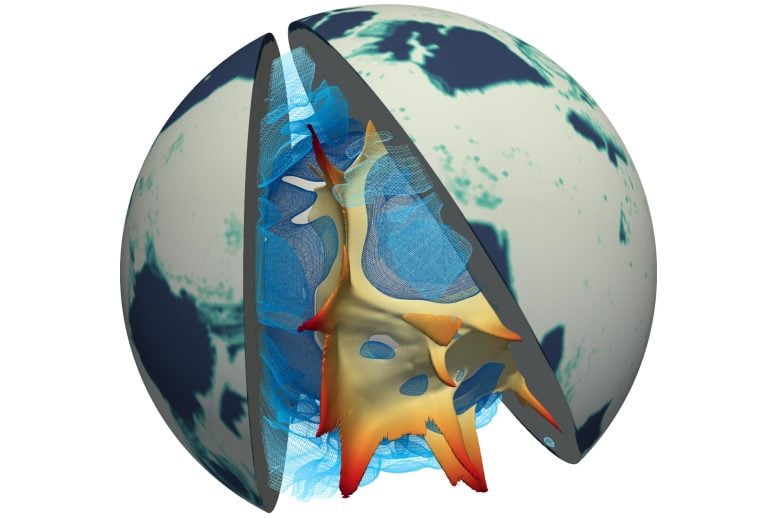
Article in Nature ‘sets the deep Earth free.’
Ground-breaking research into the hot structures deep in the Earth suggests they could be much more fluid than once supposed.
An article published recently by the prestigious journal, Nature, shows that the deep structure beneath Africa could be just 60 million years old – a fraction of the age previously supposed.
It was shown about 15 years ago that the largest volcanoes erupted over the last 300 million years coincide with the present-day location of these basal structures.
But the work by researchers at the School of Earth, Atmospheric and Life Sciences at the University of Wollongong (UOW) shows an alternative reality.
“Our work shows that the history of volcanism is compatible with both fixed and mobile structures at the base of the mantle, so that the hypothesis of stationary structures at the base of the mantle is no longer required,” lead author Dr. Nicolas Flament said.
“Understanding how the deeper, solid Earth works is important for understanding how life has evolved in the past, and then forecasting what may happen in the future. To some extent, the past is the key to the future.”

An Australian Research Council (ARC) Discovery Early Career Researcher Award fellow, Dr. Flament’s research and teaching focuses on how the dynamics of the interior of the Earth drive sea level change, shape surface landscape, and control climate.
He has worked with resource companies to predict the location of both oil and diamonds more accurately.
“Our work has set the deep Earth free,” Dr. Flament said.
“It shows that hot structures deep in the Earth come together in a way that is reminiscent of the formation of supercontinents at the surface.”
“We show that the structure beneath Africa could have assembled in the last 60 million years, which is geologically recent, and in sharp contrast of the view that the African structure had been in place for at least 300 million years.”

Dr. Flament’s research used models to suggest the structures deep in the Earth shift similar to the continents on the surface.
The research reconstructs mantle flow over the past one billion years ago to show that volcanic activity on the planet’s surface is as consistent with deep structures that shift, as well as with the idea that they are fixed.
The models also predict the presence of continental material beneath Africa consistent with existing geo-chemical data.
Reference: “Assembly of the basal mantle structure beneath Africa” by Nicolas Flament, Ömer F. Bodur, Simon E. Williams and Andrew S. Merdith, 30 March 2022, Nature.
DOI: 10.1038/s41586-022-04538-y
1 Comment
Please unsubscribe